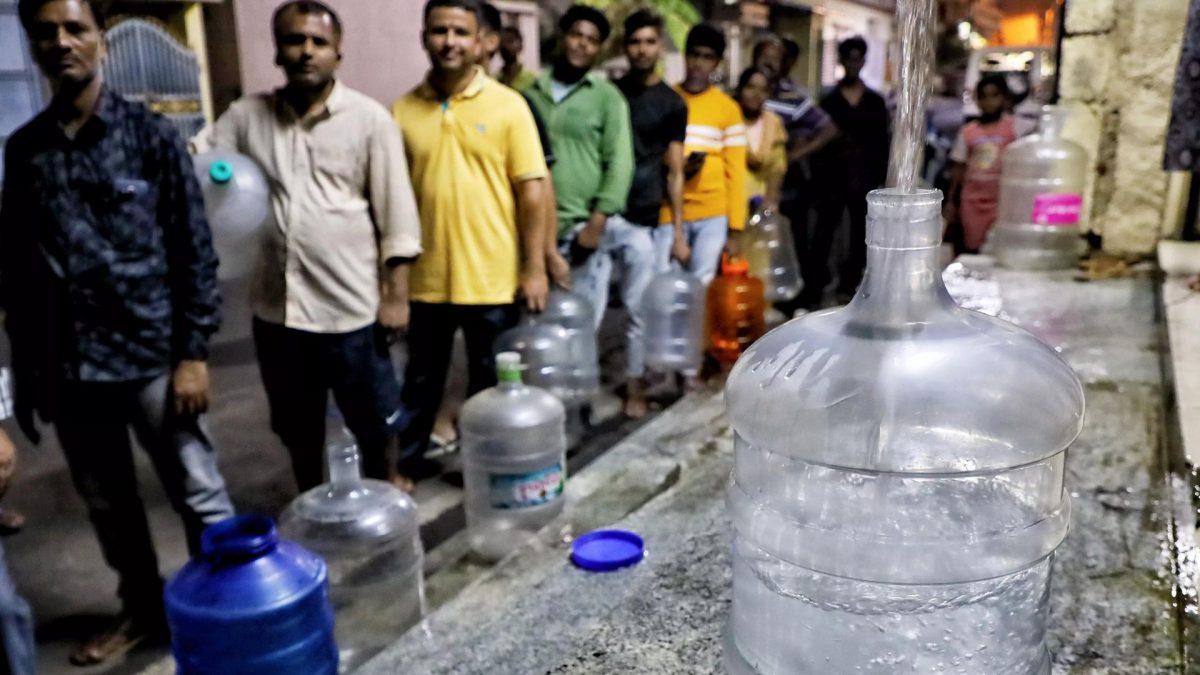Amid record-high temperatures, Bengaluru has been struggling with a serious water crisis for more than a month.
However, the problem is not just limited to India’s Silicon Valley.
According to The Hindu, the Central Water Commission’s latest weekly bulletin indicates that several South Indian regions may experience water shortages this summer due to dangerously low water levels in the region’s key dams.
Let’s take a closer look.
Mounting water crisis in southern Indian states
According to the weekly bulletin, the combined water level in 150 primary reservoirs was 38 per cent of their overall capacity at this point.
The southern region’s 42 reservoirs spread over Andhra Pradesh, Telangana, Karnataka, Kerala, and Tamil Nadu are only full to 23 per cent of their total capacity, which is about 17 per cent less than the levels observed a year ago and nine per cent less than the average for the previous ten years.
No other region — central, west, east, or north — shows such a sharp shift in levels from both the 10-year average and the previous year, as per News18.
Reservoir levels across the states this week show a serious scarcity, with Andhra Pradesh 69 per cent below average, Tamil Nadu 30 per cent, Karnataka 24 per cent, and Telangana 12 per cent below average.
Kerala is the only state that has reservoir levels that are one per cent above average.
Rivers like the Cauvery and Krishna have inadequate storage levels, which is indicative of the overall scarcity in several regions.
Depleting levels of reservoirs
Water levels in many of the southern states are dangerously low when one compares the capacities of individual reservoirs with their current storage.
With a total capacity of 4.3 lakh crore litres of water, the Linganamakki reservoir in the Shivamogga district of Karnataka is now a mere 22 per cent full, according to The Hindu. Of its 4.1 lakh crore litres total capacity, only 36 per cent of the Supa reservoir in the Uttara Kannada district of Karnataka is filled. With a total capacity of 3.2 lakh crore litres, the Tungabhadra dam in the Karnataka district of Vijayanagara is just five per cent filled.
With a capacity of six lakh crore litres, the Srisailam reservoir on the border between Andhra Pradesh and Telangana is only 15 per cent full, while the Nagarjuna Sagar dam on the same border, with a capacity of 5.1 lakh crore litres, is only four per cent full.
With a 2.65 lakh crore litre capacity, the Mettur dam in the Tamil Nadu district of Salem is now filled to 28 per cent of its maximum capacity.
Kerala stands out among the southern states in that it has at least 50 per cent of its major dams filled. The Idamalayar Dam is 48 per cent full, the Idukki reservoir is 47 per cent full, and the Kallada and Kakki reservoirs are 50 per cent full, the report said.
Situation in Bengaluru
India’s Silicon Valley, Bengaluru, is experiencing one of the biggest water crises in its history as a result of declining groundwater levels, shrinking reservoirs, an absence of rainfall, dried-up borewells, and supply interruptions.
Only those that receive piped water from rivers outside Bengaluru are still getting regular supply, as per Mint.
The government of Karnataka reports that out of the 13,900 borewells that were sunk in the city, 6,900 have dried up, even though some of them were drilled as deep as 1,500 feet. Muthuvel and other groundwater-dependent areas are now dependent on water tankers that get water from neighbouring villages.
By the end of the decade, more than 40 per cent of Bengaluru residents, according to Centre estimates from 2018, won’t have access to drinking water.
Amid this, consumers are reportedly stung by high vegetable costs as supplies have taken a hit. People seeking to buy a property in Bengaluru are reassessing their decision as several parts of Karnataka’s capital reel under a water crisis. A recent report by Nasscom-Deloitte has found that due to these civic issues, IT companies are now open to expanding their operations beyond Karnataka’s capital.
According to India Today, a housing society in Bengaluru has announced a charge of Rs 5,000 on residents for misusing drinking water, citing the severity of the situation. They have also employed a separate security guard to keep an eye on the issue.
Additionally, the district government has set fixed rates for 200 private tankers, as they were doubling their prices due to severe water scarcity.
To combat this severe situation, the Bangalore Water Supply and Sewerage Board (BWSSB) has made the use of tap aerators mandatory for apartments, commercial establishments, industries, luxury hotels, restaurants, and public places.
Reasons behind the crisis
The southwest monsoon season (June to September), which is critical for rainfall in the southern states, saw an eight per cent shortfall this year in comparison to the long-term average in 2023, according to Business Insider.
The region also had a 13 per cent rainfall deficit from October to December during the winter monsoon season.
South India’s reservoir levels have been negatively impacted by these ongoing deficits as well as this year’s low rainfall, as per the report.
The closure of lake networks and excessive groundwater pumping in recent years have made this worse for urban centres in the region, such as Bengaluru and Hyderabad.
Pre-monsoon and monsoon rains are expected to replenish water resources, therefore, even with the current shortages, several state administrations guarantee the public will have enough water until June.
El Niño’s transition to neutral and the impending La Niña event point to average to above-normal monsoon rainfall, according to reports.
With inputs from agencies


)




)
)
)
)
)
)
)
)